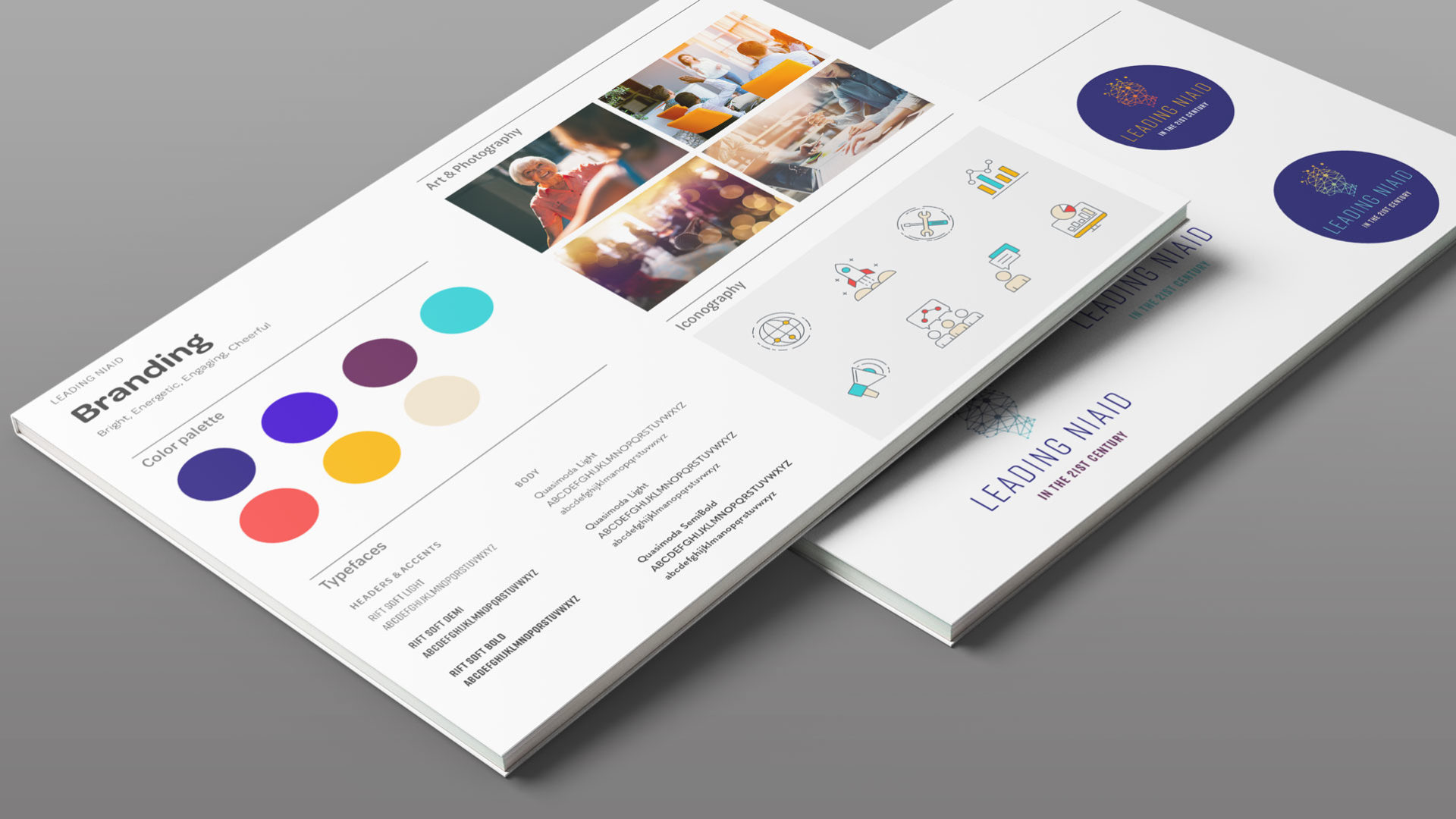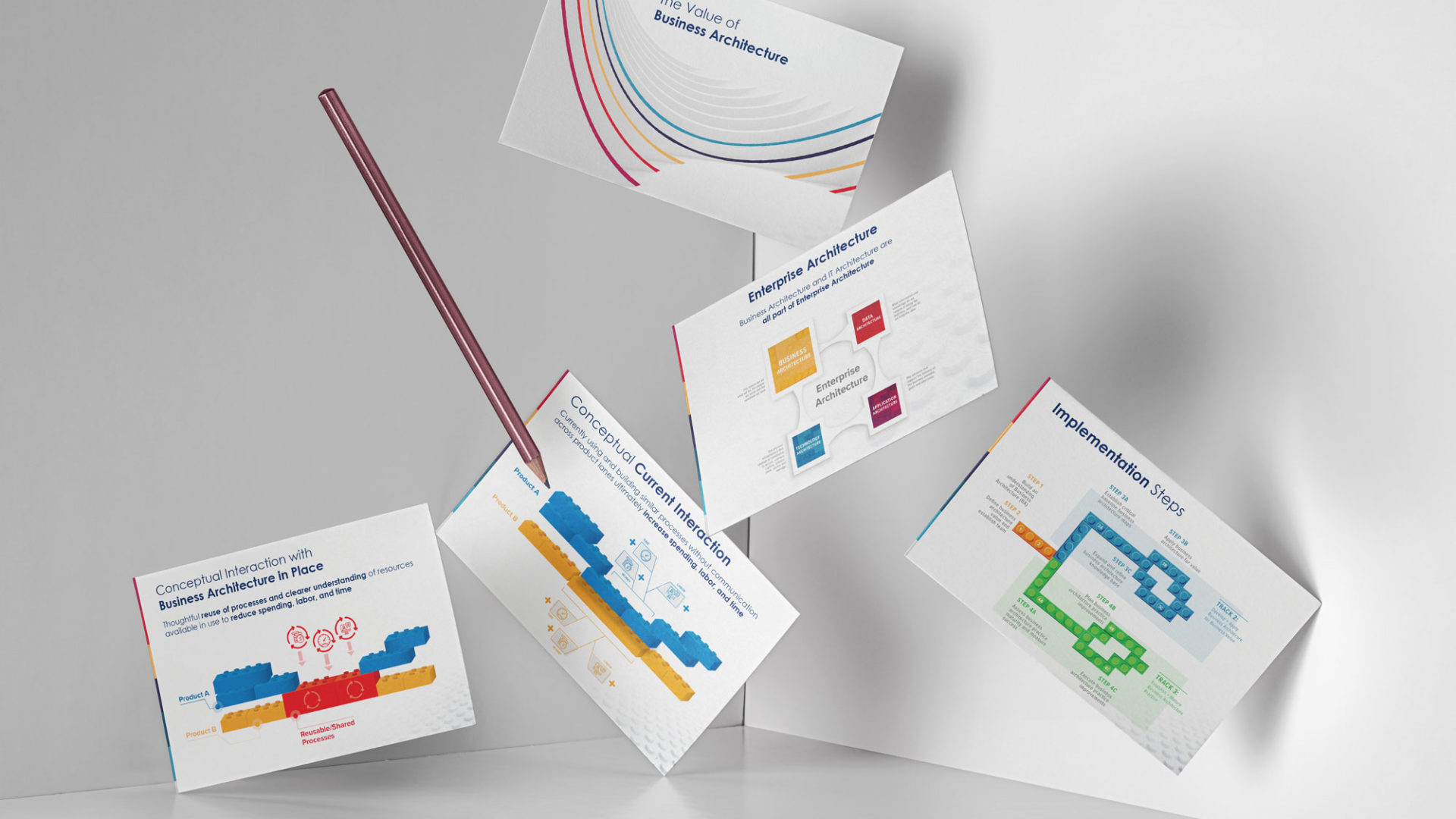I recently wrote a blog post in our “Buzzwords Defined” series covering Human-Centered Design. While today’s topic, visual consulting, isn’t what I’d consider a buzzword, it is something we consider a differentiator at The Clearing. It’s also the practice I have the amazing opportunity to lead in partnership with an exceptional team and one that touches nearly everything we do – from client delivery to TC’s own visual identity.
What is A Visual Consultant?
We are experts in the field of design – visual communication design, graphic design, user experience (UX) design, interactive design, and the list keeps on growing as the field of design continues to evolve. As consultants, we approach our client engagements from the lens of a visual communicator – be it through drawing, motion, storytelling, or a fully engaging digital experience.

We partner with our clients to create inclusive brands that help represent each project with one unified voice.
Here’s an example. A data consultant may see the world through numbers, correlations, and comparisons. A visual consultant may see it through imagery, patterns, motion, or experiences. They both tie into The Clearing’s people-first change management consulting approach, working together to allow us to pair imagery and overall experience with data in a thoughtful way to inform delivery.
Visual Consulting in Practice
Often, we find the common denominator our clients lack is a shared language. Solving problems and seeing opportunities is difficult when two parties don’t understand what the other is saying. At The Clearing, we’ve found that creating a visual language can help to improve communication and build more meaningful solutions. Here are a few examples of how it comes to life in practice:
- Seeing is believing. Oftentimes clients don’t know what they need until they see it. Our consultants will talk about solutions; however, sometimes the ideas don’t resonate until someone gets up and draws a picture on a whiteboard or shares a sketch.
- Leveraging visuals to bridge information gaps. We find presenting data in a visual format increases understanding and “stickiness” with our clients. It breaks down complex and overwhelming content into easy-to-understand patterns and visuals.
- Gaining leadership buy-in quickly. If we have a five-minute meeting with a senior leader and need to make sure one key piece of information is absorbed, we use visuals. Nothing gets a point across more quickly and clearly than a well-designed infographic.

We co-collaborate with partners and clients to create a shared language and vision based on customer needs.
A current example is the newly released President’s Management Agenda (PMA). Data and content are visualized throughout the document in both a static and interactive way to share with the American public the President’s plan toward an equitable, effective, and accountable government that delivers results for all. The design of this document is crucial in reaching all Americans and needed to be designed in a way that was easy to view and consume in an accessible manner. The visuals helped create a shared language that spans audiences from everyday citizens to policy gurus.
Our Approach to Visual Consulting
Two key elements differentiate the way we use visual consulting.
- First, we follow a people-first approach to our work.
- Second, our visual consultants are embedded in the work and committed to our clients: we’re problem solvers, collaborators, and active listeners at heart.
Before we put pen to paper (or cursor to screen), we sit, we observe, we listen, we discover, and we explore together. Only after this can we begin to design with intention, which is unlike many design teams that immediately go into the “do” phase. This co-collaboration allows our team to truly understand our client’s needs, challenges, and opportunities and enables more meaningful and lasting solutions. Our clients are always part of the design process that relies heavily on our co-created shared visual language.
What I’m most proud of is when our clients say the visual design helps them to create a shared language that has allowed them to connect with their stakeholders on a deeper level and truly “feel” the impact that is possible. This visual partnership makes achieving buy-in easier and getting to implementation faster – and that’s a language anyone can understand.


 The Clearing’s Employee Experience
Improvement model, adapted from Itam
& Ghosh, 2020, focuses on three objectives:
The Clearing’s Employee Experience
Improvement model, adapted from Itam
& Ghosh, 2020, focuses on three objectives: 


















